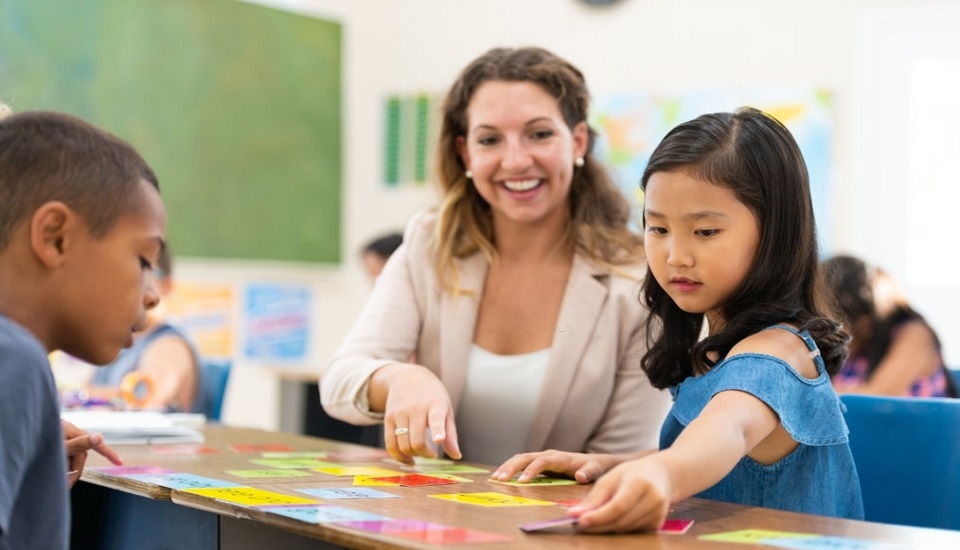
Why Is Multisensory Instruction So Effective?
26th October 2021
We all know that children learn in several ways. As a skilled educator, you need to know what it is like to work with children who catch on promptly. Multisensory teaching is an effective way of teaching that connects more than one sense at a time.
Furthermore, recent developments in the reading core curriculum recommend that multisensory learning is one of the most efficient methods for doing so. These activities are based on the whole brain knowledge.
What Is Multisensory Learning?
Multisensory teaching isn't just limited to reading and listening. With multisensory teaching, children use more than one sense at a time. It keeps more than one sense at a time. Quite naturally, not every class will get the chance to use all five senses, isn’t it? Well, in most of the multisensory lessons, children engage with the material in more than one way.
Multisensory teaching gives children more than one way to make associations and learn concepts. All children can benefit from multisensory teaching.

However, multisensory teaching can be mostly supportive for kids who learn and think differently. For example, it works best for kids who struggle with visual or auditory processing. Multisensory teaching makes it easier for children to:
• Accumulate information
• Make relations between new information and what they previously know
• Recognize and work through problems
• Use nonverbal problem-solving skills
Multisensory instruction supports the Universal Design for Learning (UDL) structure.
The definition of multisensory learning is using the neuroscience behind how we learn to teach lessons that engage two or more senses. As long as the learning activity engages several areas of the brain, it can facilitate students to develop stronger memories around how to do it.
How Multisensory Learning Helps Children?
Various contemporary researches in cognitive science established that multisensory learning does help kids in their reading struggles. Mixtures of educational researchers have found that multisensory actions can teach students to connect letters or words with sounds faster.
And this is one of the initial reading skills that can promote strong developing literacy. Even small activities that engross various senses can teach students to use their complete brain while reading or writing.
When a teaching session utilizes multiple senses at once, it strengthens students’ weaknesses.
Sight: Learners see stimuli with their eyes. This includes several labels on classroom furniture and other items in a classroom. Furthermore, it could be flash cards or graphic organizers. With this teaching tool, skilled teachers would dictate or display a word, and learners would construct the word by using letter tiles. Then students would write the word.
Hearing: Apprentices hear stimuli with their ears and this may include hearing letters and letter sounds. This process includes examples like as you say them, singing rhyming songs, and participating in read-aloud etc. Collective reading is also an influential teaching tool for budding literacy. As you read or your students listen to an audiobook, they can intermingle with the text by underlining sight words that they hear.
Touch: Learners touch stimuli with their hands. This is possibly the leading missing piece in most of the classrooms. Nevertheless, this practical approach is decisive for young learners. Students can control letter tiles as they spell words and merge sounds. They can shape letters or words with kinetic sand or play-dough, or they can merely outline sandpaper letters with their fingers as they say and hear letter names and sounds as well.
These three above-mentioned senses combine flawlessly into the concept of literacy.
Certainly, reading hacks for struggling young readers can be more helpful if you include some of their strengths as well. And to utilize multiple intelligence in your classroom, try connecting your lesson plans to at least two different types of intelligence and sensory ways.
Multisensory activities help all children and can be executed daily in classrooms. Nevertheless, the key is to apply more than one sense at a time in order to strengthen the concept. Certificate in Nursery Teacher Training Course Online prepares the teaching professional to understand and implement the strategies in 21st-century classrooms. The best part about multisensory activities is that they generally feel like play or fun to children. Multisensory literacy actions give essential involvement for the students who need it, while making learning more fun for all of your students.
Written By : Park Jin Ae




